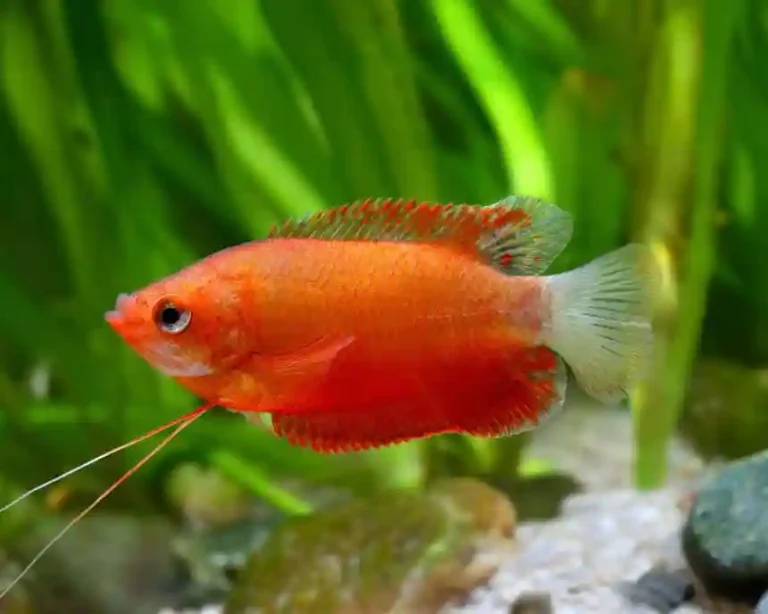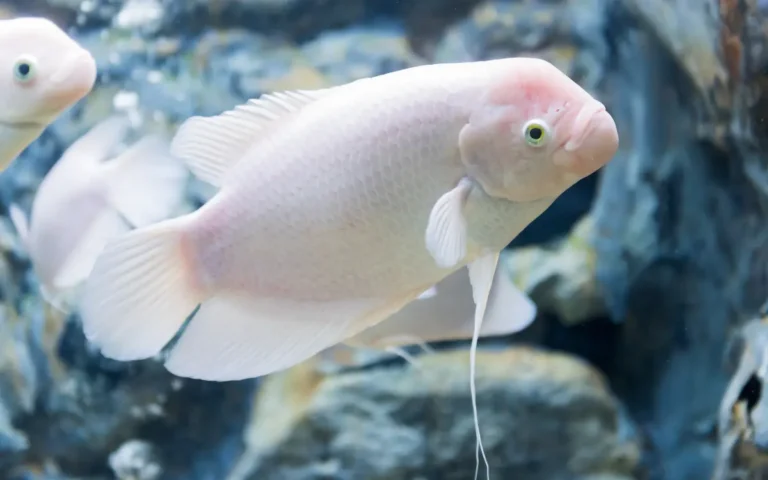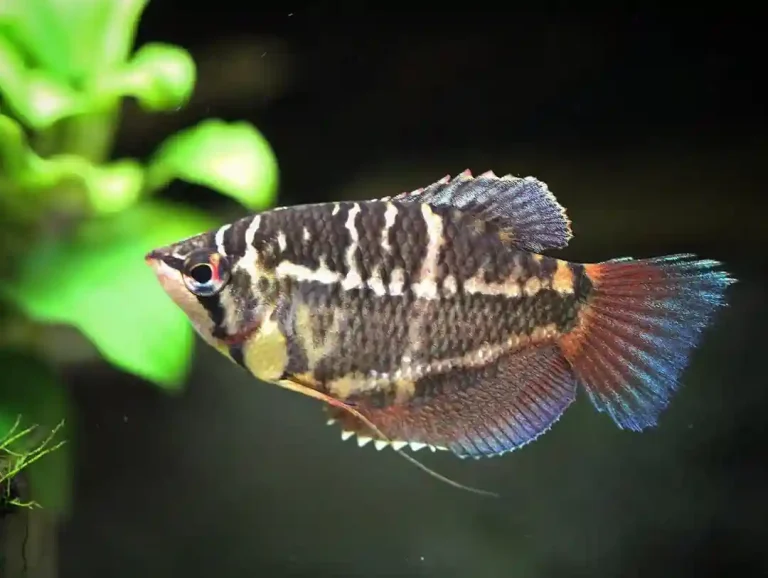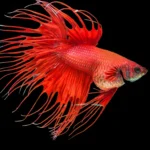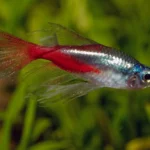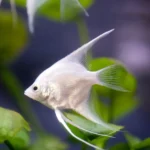The Peacock Cichlid is one of the most colorful freshwater fish, known for its vibrant hues and elegant swimming. Native to Lake Malawi in Africa, these cichlids are a favorite among hobbyists for their beauty, manageable aggression, and engaging behavior. This guide covers everything from tank setup and feeding to breeding and ideal tank mates.

Peacock Cichlid Species Profile
| Attribute | Details |
| Family | Cichlidae |
| Aggressiveness | Moderate (males are more territorial during breeding) |
| Minimum Tank Size | 55 gallons |
| Life Span | 6–10 years |
| Diet | Omnivore: flakes, pellets, live/frozen foods |
| Size | 4–6 inches |
| Compatibility | Compatible with other Lake Malawi cichlids and catfish |
| Temperament | Territorial but generally less aggressive than other cichlids |
Ideal Tank Setup
A 55-gallon tank is the minimum for housing Peacock Cichlids comfortably. These fish are active swimmers and territorial, so space is critical. Use a sandy substrate and plenty of rocks, caves, and hiding spots to mimic their natural environment and reduce aggression. Hardy plants like Java Fern and Anubias can be included but secure them well, as cichlids enjoy digging.
Maintain water temperatures between 78–82°F (25–28°C), with a pH between 7.8 and 8.6. Hardness should range from 10–20 dGH. Use a strong filter to handle waste and ensure adequate oxygenation with surface agitation or air pumps. Weekly water changes of 20–30% are vital to keeping the environment clean.
Feeding Peacock Cichlids
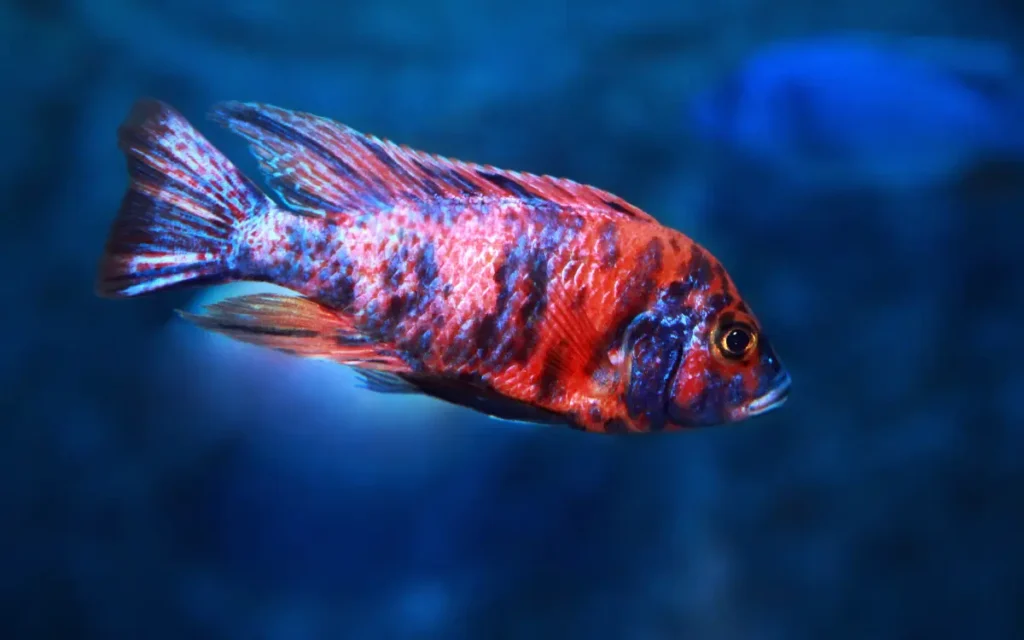
Peacock Cichlids are omnivorous and thrive on variety. Offer high-quality flakes or pellets daily as a staple. Add live or frozen protein sources such as brine shrimp, bloodworms, or daphnia two to three times per week. Supplement with vegetables like blanched spinach or zucchini once or twice a week to ensure fiber intake.
Feed small portions 2–3 times daily, only as much as they can consume within a few minutes. Remove any uneaten food to maintain water quality. Mixing floating and sinking foods caters to different feeding habits within the tank.
Breeding Peacock Cichlids
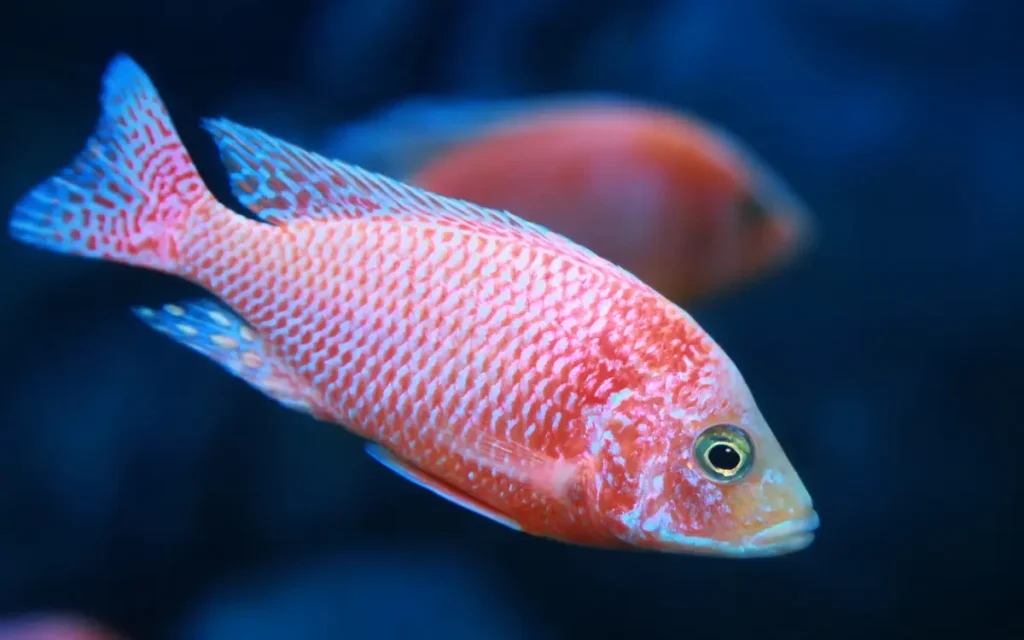
Set up a separate breeding tank of at least 55 gallons with fine sand and flat stones for egg laying. Keep water temperature at 78–82°F and pH at 7.8–8.6. Choose a healthy, colorful male and 2–3 females. Condition them with a protein-rich diet of live and frozen foods.
Males display brighter colors and perform dances to attract females. After the female lays eggs on a flat surface, the male fertilizes them. Eggs hatch in about 2–3 days. Fry will become free-swimming in 5–7 days.
Feed fry infusoria or liquid fry food initially, then transition to crushed flakes and baby brine shrimp. Use sponge filters and regular water changes to ensure fry survival. Once fry reach about 1 inch in size, they can be introduced to the main tank.
Compatible Tank Mates
Peacock Cichlids do well with similarly sized, moderately aggressive fish that prefer the same water parameters.
Good Tank Mates Include:
- Haplochromis (Haps)
- Less aggressive Mbuna Cichlids
- Synodontis Catfish
- Bristlenose Plecos
- Yellow Labs (Labidochromis caeruleus)
- Electric Blue Ahli (Sciaenochromis fryeri)
- Other Peacock Cichlids (with enough space)
- Rainbowfish
- Tiger Barbs (in large groups)
- Clown Loaches
Avoid keeping them with overly aggressive or much smaller fish.
Read also: 11 Types of Gourami Fish
Common Questions
Are Peacock Cichlids poisonous?
No, they are completely safe and pose no threat to humans or other tankmates.
Do they lay eggs?
Yes, they are egg layers. The female lays on flat surfaces and the male fertilizes afterward.
Can different cichlid species breed?
Sometimes. Crossbreeding between different species may occur, but it’s generally discouraged as it can create unpredictable offspring.
Do they eat other fish?
Yes, they may eat smaller fish if there’s a significant size difference. Always choose tankmates wisely.
Can they recognize their owners?
Yes, cichlids are intelligent and often respond to their caregivers, especially at feeding time.

